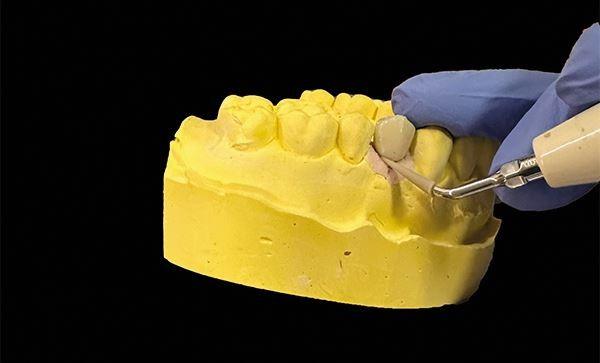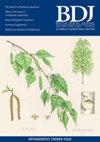Effectiveness of PEEK ultrasonic tips and cement types on residual cement around implant-supported restorations
IF 2.3
4区 医学
Q2 DENTISTRY, ORAL SURGERY & MEDICINE
引用次数: 0
Abstract
Purpose The aim of this study was to assess the effectiveness of a PEEK (polyether-ether-ketone) ultrasonic tip in the cleaning around implant-supported restorations and to evaluate the effect of different cement types on the amount of residual cement at the restoration margins. Materials and methods A master model with an implant analogue placed in the upper left first premolar region was used to create 72 cast models and zirconia crowns were fabricated for each model. A total of 72 zirconia crowns were divided into two main groups based on the cleaning method applied after cementation. In the first group, residual cement was cleaned using only a dental explorer, while in the second group, cleaning was enhanced by using a PEEK ultrasonic tip following the initial use of a dental explorer. Each main group was further divided into three subgroups according to the type of cement used: polycarboxylate cement, glass ionomer cement and resin cement. After cementation and cleaning, the zirconia crowns were detached from the models, and cement residue was digitally photographed from the buccal, lingual, mesial and distal surfaces. The percentage of residual cement was then evaluated using Adobe Photoshop via pixel-based digital analysis. Data were analysed using the Shapiro-Wilk test, Robust ANOVA and Bonferroni method test for multiple comparisons. Results Statistical analyses revealed a significant difference between the cleaning methods regardless of cement type (p = 0.002). The results demonstrated that cleaning with a PEEK ultrasonic tip significantly reduced residual cement compared to using a dental explorer alone. Among the tested cements, resin cement left the least residual cement, while glass ionomer and polycarboxylate cements left significantly more residue (p <0.001). Conclusions The findings emphasise the clinical advantages of the PEEK ultrasonic tip cleaning method. Additionally, resin cement demonstrated the lowest amount of residual cement.

PEEK超声针尖和骨水泥类型对种植体支撑修复体周围残余骨水泥的影响。
目的本研究的目的是评估聚醚醚酮(PEEK)超声尖端在种植体修复体周围清洁中的有效性,并评估不同类型的骨水泥对修复体边缘残余骨水泥量的影响。材料与方法采用主模型,在左上第一前磨牙区放置模拟种植体,制作72个铸造模型,每个模型制作氧化锆冠。根据修复后的清洁方法,将72个氧化锆冠分为两组。在第一组中,仅使用牙科探针清洁残余水泥,而在第二组中,在首次使用牙科探针后,使用PEEK超声尖端加强清洁。根据所使用的水泥类型,每一大类又分为三个亚组:聚羧酸盐水泥、玻璃离子水泥和树脂水泥。胶结和清洗后,从模型上取下氧化锆冠,并对颊、舌、中、远端表面的胶结残留物进行数码拍照。然后使用Adobe Photoshop通过基于像素的数字分析来评估残余水泥的百分比。数据分析采用Shapiro-Wilk检验、稳健方差分析和Bonferroni方法进行多重比较检验。结果统计分析显示,不同水泥类型的清洁方法差异有统计学意义(p = 0.002)。结果表明,与单独使用牙科探针相比,使用PEEK超声尖端清洁可显著减少残余水泥。在所测试的水泥中,树脂水泥留下的残余水泥最少,而玻璃离子和聚羧酸盐水泥留下的残余水泥明显更多(p
本文章由计算机程序翻译,如有差异,请以英文原文为准。
求助全文
约1分钟内获得全文
求助全文
来源期刊

British Dental Journal
医学-牙科与口腔外科
CiteScore
3.10
自引率
15.40%
发文量
1096
审稿时长
4-8 weeks
期刊介绍:
The role of the BDJ is to inform its readers of ideas, opinions, developments and key issues in dentistry - clinical, practical and scientific - stimulating interest, debate and discussion amongst dentists of all disciplines. All papers published in the BDJ are subject to rigorous peer review.
 求助内容:
求助内容: 应助结果提醒方式:
应助结果提醒方式:


